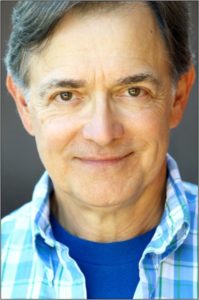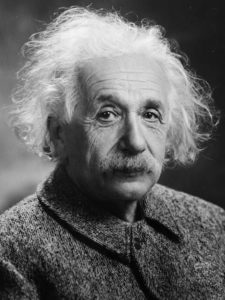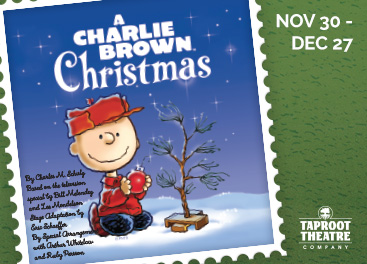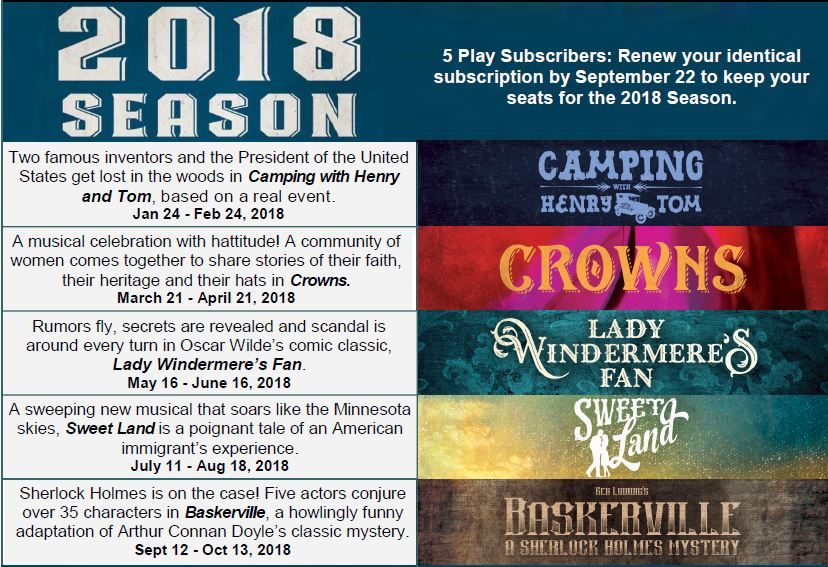
IN THIS BETWEEN THE LINES:
SEP 20 – OCT 21, 2017
Previews: Sep 20 & 21 at 7:30 PM
Opening Night: Sep 22 at 8:00 PM
Pay What You Can: Sep 27 at 7:30 PM
SHOW TIMES
Wed/Thu: 7:30 PM
Fri/Sat: 8:00 PM
Sat Mat: 2:00 PM
Length: 80 minutes with no intermission
Age Rec: 12+, children under 5 are never admitted
ACTOR DENNIS BATEMAN FINDS THE MAN IN THE MYTH
You’re originally from:
Carlyle, Illinois. A small farming community not far from St. Louis, MO and birthplace of famous Old West gunslinger and Pony Express man, Jack Slade.
Why acting?
The first time I performed on stage, I loved the feeling of living in someone else’s skin for a while, experiencing their time, culture, attitudes, struggles and emotions. It gives me a reason to learn history and psychology, and broaden my understanding of all kinds of people. Storytelling has been the passion of humans since our beginnings, and sharing a different, interesting life with fellow humans is the best way I know to tell a story.
What drew you to Relativity?
Being an actor of a certain age, I was hooked the moment I saw the name Einstein. What more fascinating role could there be? And how often is a scientist a main character – in his own story – let alone the scientist who changed our perception of the universe forever… just by thinking about it (“My laboratory is under my hat.”)? Then, there’s also the quality of the writing itself which attempts to discover the man, so often obscured by the fame of his own intellect.
Have you played any other characters based on historical figures? Who?
President Harry Truman (debating Einstein about the A-bomb) in The Realm of Whispering Ghosts; a singing Sir Arthur Conan Doyle in Fairy Stories; journalist Edward R. Murrow in Anne vs. Abby, on Lifetime Network. I once turned down playing FDR in Annie, a role I hope some time to have another opportunity to play.
Do you feel any special pressure when playing an actual historical person?
I think pressure of any kind is not helpful to an actor, so I avoid it whenever possible. What I do feel is a strong responsibility to show our audience the most believable and committed character that I can. The nice thing about playing well-known people is that their life stories are usually easy to access and provide the actor a solid framework early in his process.
How do you balance the character in the script with the perception of the actual person?
By being off-balance. In the case of Relativity, we’re dealing with a part of the professor’s life that is personal and not widely known, like his professional life. For me, that sort of imbalance is the most exciting part of acting. It’s our struggle to balance the most challenging parts of our lives that is the heart and soul of good drama.
Did you discover anything surprising while researching Einstein?
Einstein is, without peer, the most surprising person I’ve ever researched for an infinity of reasons. I think the most pleasant surprise is what a fun fellow he must have been to hang out with. His wickedly smart, droll sense of humor kept me laughing constantly. And, the older he got, the more caring and generous a person he became. He opposed war in every form, even at his own peril, and was one of the great humanists of the world.
What inspires you?
Good art of course and, since becoming familiar with Albert Einstein, I have to agree with him — the most inspiring aspect of life is the beauty and mystery of nature.
What is the best piece of advice you’ve ever been given?
In Life: “It is better to be interested than interesting.”
In Theatre: “The most important thing about acting is honesty… and if you can fake that, you’ve got it made!”
Is there anything else you’d like to say?
Many thanks to everyone who makes this intriguing show happen: Scott, my fellow cast members and crew of Taproot Theatre, our playwright, Mark St. Germain, and most of all you, our audience, for coming to share our story. Enjoy the show!
BE IN THE KNOW WITH OUR EINSTEIN 101
Albert Einstein (1879 – 1955) was one of the most influential scientists in history.  His studies in physics, such as his General Theory of Relativity (published in 1915), in which Einstein theorized that space and time are curved in direct relation to the gravitational pull from whatever matter is present, upended centuries of understanding about time, space, gravity and light, reshaping the way we see the universe.
His studies in physics, such as his General Theory of Relativity (published in 1915), in which Einstein theorized that space and time are curved in direct relation to the gravitational pull from whatever matter is present, upended centuries of understanding about time, space, gravity and light, reshaping the way we see the universe.
In 1905, while working as a Swiss patent clerk, Einstein published four major scientific papers in what has been called his “miracle year.” The first paper, on photoelectric effect, described light as being made up of phonons rather than continuous waves, which paved the way for quantum physics. The next paper, on Brownian motion, determined the size of an atom. The Special Theory of Relativity, the third paper, described the physical relationship between space and time. The fourth paper discussed the relationship between matter and energy; it includes his famous equation “E=mc2” (energy is equal to mass times the speed of light squared) which describes how particles of matter could be converted into energy, thus discovering the potential of atomic energy.
Albert Einstein received the 1921 Nobel Prize for Physics after many of his findings on relativity had been verified. Fleeing the Nazi’s in 1932, Einstein accepted a position at The Institute for Advanced Studies on the Princeton University campus in New Jersey, were he remained for the rest of his life. While Einstein’s contribution to science is unquestioned, his personal life contains several more complicated twists and turns. While studying in Switzerland in the late 1890s, young Albert began a relationship with a brilliant fellow student named Mileva Maric. Despite his Jewish parents objections to Mileva’s Serbian heritage, Albert and Mileva had a daughter in 1902, were married in 1903, had two sons, and divorced in 1919. Albert quickly remarried his cousin Elsa, with whom he had already been having an affair, and they remained married until Elsa’s death in 1936.
The fate of Einstein’s daughter, named Lieserl, of whom he never spoke, is a mystery. Historians only discovered her in 1987, when many of Einstein’s personal papers were published. Some believe she died in infancy, others believe she was given up for adoption in Serbia because she was born out of wedlock. The play Relativity by Mark St. Germain focuses on the mystery of what happened to Lieserl.
CELEBRATE CHRISTMAS WITH TAPROOT THEATRE
It’s a bitterly cold Christmas Eve on the banks of the Potomac River where the lives of abolitionists, assassins, soldiers, enslaved and free are woven together in an American tapestry. In their darkest hour, when peace seems impossible, the promise of Christmas breaks through despair in this musical celebration of compassion and hope by Pulitzer Prize-winning playwright Paula Vogel. Directed by Faith Bennett Russell & Karen Lund.
Subscriber pre-sale for A Civil War Christmas: An American Musical Celebration ends Sep 22.
A Charlie Brown Christmas is sponsored in part by Ballard Industrial.
CREATING EINSTEIN WITH COSTUME DESIGNER SARAH BURCH GORDON
Everyone can picture Albert Einstein in their head: the wild grey hair, moustache and loose fitting clothing. Did you stay close to his iconic look or did you take some creative liberties in designing his costume?
We are sticking very close to his iconic look. But we aren’t going so far as to use prosthetics or anything like that. I think that the wig, mustache and clothing choices will be very convincing on Dennis. I looked at a lot of photos of Einstein to research his fashion quirks to keep him as realistic as possible.
Did you discover anything surprising while researching Einstein?
He didn’t like wearing socks! Clothing-wise, he had a couple of basic looks he stuck to when he was dressing himself — he occasionally wore suits with a tie, but more often, you see him in a sweater or sweatshirt with sandals or slippers.
Let’s talk about the wig – is it difficult to maintain? How do you keep it looking so wild? What’s it made of? And does it have a name?
The wig is actually a very old wig from our stock. It is a lace-fronted, acrylic wig and after years of use and abuse, it is fried and now the perfect texture to keep it looking crazy and wild. Lauren Karbowski, our wardrobe supervisor and onsite wig person, did some trimming and re-arranging of hair to style it more to look like Einstein wore his hair. It was originally a chin length bob for a woman. This particular wig was worn by Pam Nolte for Spitfire Grill and by Kim Morris for The Foreigner as well as a few other random appearances over the past 12 years. It doesn’t have a name… yet.
One of the major themes of the show is discovering Einstein, the real human, rather than Einstein, the popular caricature. Did you make any specific choices to help bring him down to earth?
What really appealed to me in the photos that I looked at of Einstein was the grittiness of who he was. It was obvious that he really didn’t give a rip what he wore, he had more important things to think about. I was particularly drawn to photos of him in his casual, at home wear because I get the sense those photos more truly reflect his non-public self. We are definitely making his clothing look lived-in. In some of the photos you can see that his clothing is not only well worn, but you can even see stains on some of his sweaters. My goal is to make him as realistic as possible, and not to idealize him at all.
What influenced the looks of Margaret and Mrs. Dukas?
Margaret is very much influenced by the period and what Mark St. Germain says about her in the script. In the stage directions, he paints a very clear picture of her being extremely well put together and very stylish. The suit she’s wearing is a vintage velvet suit from the late 1940s, it has a longer and fuller skirt than you typically see in the earlier ‘40s because the rations on fabric had been lifted after the war. I tried to get her silhouette to be right before the introduction of the “new look” which is so typical of the early 1950s.
Mrs. Dukas is an actual person, so I looked at photos of her to get a feel for who she was. We didn’t want to make her a stereotypical housekeeper or maid because she was so much more than that to Einstein. She needed to be practical, but not unattractive. For instance, she won’t wear an apron all the time, she’ll just wear it to protect her dress when she serves coffee, which is something women of the time did. She will look more like a wife than a housekeeper. She is also in a typical 1940s silhouette as well, although her hair is not typical 1940s. She wore her hair in a shorter, simpler style and we will try to reflect that.
Anything else you’d like to say about the designs?
It’s always a challenge to re-create historical people on stage. We want to capture the spirit of the look so that they are recognizable, but not go so far away from what the actor looks like that the changes are distracting to the audience, particularly in our space. It’s a fine line to walk. I usually pick one or two significant characteristics of the real person and try to incorporate those into the costume, such as Einstein’s hair and lack of socks, and that is usually enough to help the audience buy in.
RESUBSCRIBE FOR THE 2018 JEWELL MAINSTAGE SEASON!
Renew your subscription today at taproottheatre.org/subscribe/.
PARKING REMINDERS
Out of respect for our neighbors, Taproot patrons are asked to park only in the suggested lots below or use nearby street parking. We suggest allowing at least 30 minutes of extra time to find parking. Find more information on visiting the theatre here: taproottheatre.org/directions/.
- All That Dance (Complimentary Parking): Accessed from Phinney Ave N. The parking lot will be on the left after turning north on Phinney Ave N. Please park in the two west aisles of the lot (the ones closest to the theatre). This parking is available to Taproot patrons Tuesday-Friday from 6 PM – midnight and Saturday from noon – midnight.
- Bank of America (UPDATE: Paid Parking): Located on the corner of N 85th St and Phinney Ave N one block east of Greenwood Ave N. Patrons using this lot must pay by phone. Bank of America parking is reserved for bank customers from 10 AM – 6 PM Monday – Friday and from 10 AM – 1 PM on Saturdays. All other times, parking is $5*. Operated by Platinum Parking.
- Chase Bank (Paid Parking): Located behind Chase Bank on the corner of Greenwood Ave N and N 85th St. This is the closest lot to Taproot. Patrons using this lot must pay by phone. All Day parking is $5*; parking after 5 PM is $3*. Operated by Diamond Parking.
- Fred Meyer (Limited Complimentary Parking): 20 stalls are available in the south west corner of the parking lot. Please park in the aisles closest to N 85th St and 3rd Ave NW. Patrons parking in other areas of this lot may be ticketed or towed. This parking is available to Taproot patrons Tuesday-Friday from 6 PM – 11 PM and Saturday from 1 PM – 11 PM.
*Taproot Theatre Company is not affiliated with Bank of America, Chase Bank, Platinum Parking or Diamond Parking. All prices quoted are correct as of 5/22/17. Prices are subject to change without notice.
2017 SUBSCRIBER REWARDS PARTNERS
Visit taproottheatre.org/subscriber-rewards/ for more information.
Chaco Canyon Organic Cafe
Discount: 10% off when you present your Subscriber Rewards Card.
Greenwood Vision
Discount: 10% off on glasses or contacts when you mention code TPG017.
Heal with Wendy, Inc
Discount: Show your Rewards Card and receive 10% off treatment services throughout the year. Not valid with packages.
Ladywell’s Vitality Spa & Sauna
Discount: 10% off entry when you present your Rewards Card.
Luso Food and Wine
Discount: $1 off Portuguese Wine and small plates. $3 off large plates.
Modern Japanese Cuisine
Discount: 10% off your total when you present your Rewards Card.
Naked City Brewery and Taphouse
Discount: 10% discount for all Taproot patrons. Show playbill or ticket to your server or bartender on the night of the show.
The Olive and Grape
Discount: 10% off your bill when you present your Rewards Card.
Seatown Veterinary Care
Discount: Show Rewards Card and receive 10% off on all professional services (does not include lab work or prescriptions/OTC products).
NEW! Satay Bar
Discount: Present Rewards Card and receive 10% off.



